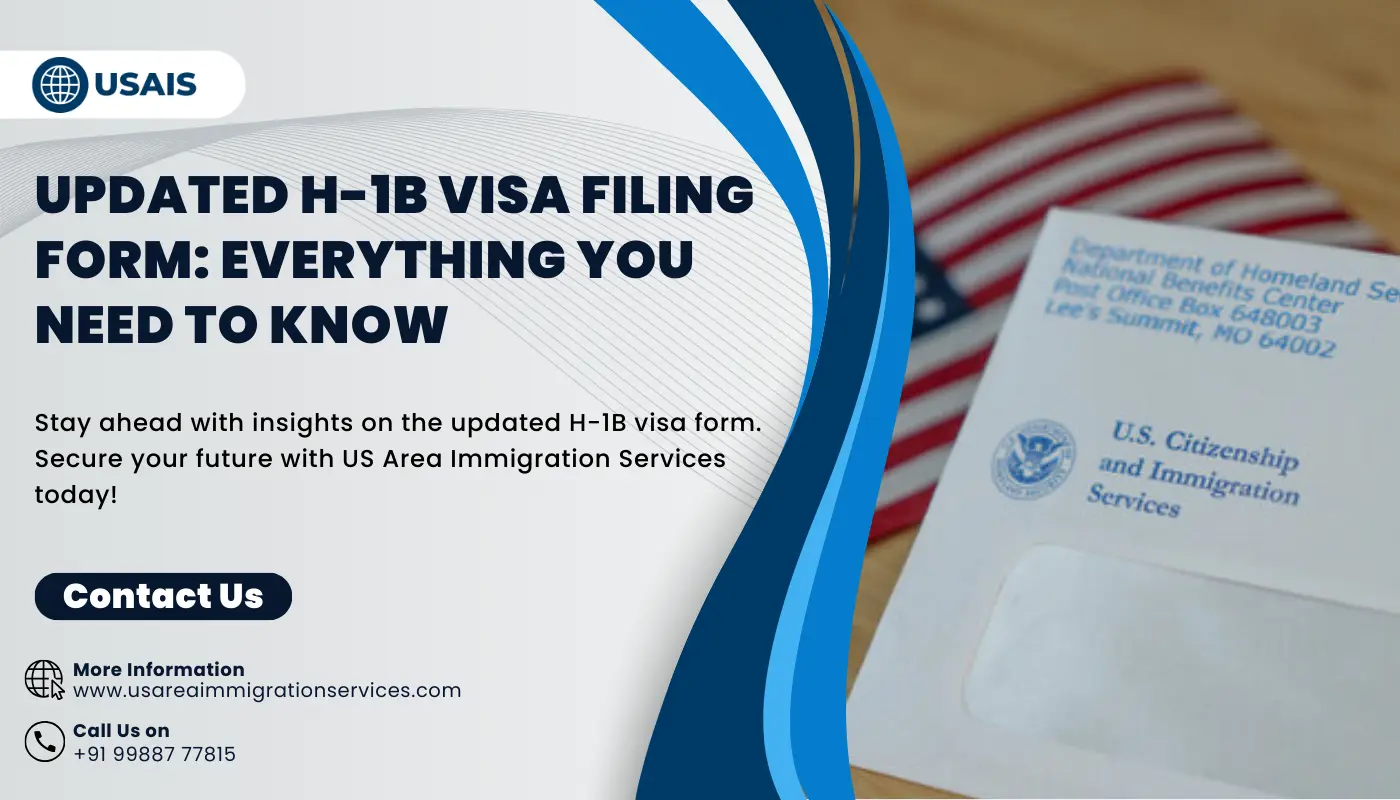The United States Citizenship and Immigration Services USCIS has recently disclosed the new H-1B filing form in a notable change to employment-based immigration. The change seeks to maintain and standardise the H-1B visa application systems as they apply to foreign workers and their employers in the U.S. H-1B visa is vital to organisations that require the services of skilled professionals in some of the most complex categories of work including technology, engineering, health among others. This article explores the details of the new form, why and how the change was made, and how applicants will be affected as well as employers.
What is the H-1B Visa?
H-1b visa is one of the types of non-immigrant visas; it allows employers in the United States to hire foreign personnel who specifically occupy the profession that requires the exercise of specialized, theoretical or technical knowledge. Employees most often categorised under this type of employment include IT workers, engineers, teachers, scientists, and physicians. Does not exceed three years when it is first issued but can be renewed up to six years in some cases.
The number of applications for H-1B has steadily increased over the years and the visas are issued on a quota basis and hence has always been a competitive and overwatched program. There is a showing that the prospective employee’s position is a speciality occupation and that no qualified U.S. worker is available for it.
Why the Revised H-1B Filing Form?
The new form for filing the H-1B visa application was developed to solve several problems associated with the particular type of visa application and to meet the needs of the contemporary world. These changes are well thought out to enhance effectiveness, curb fraud, and be responsive to the modern labour market forces. Below are the primary reasons for this update:
1. Modernization of Processes
- The older form failed to use enhanced technology hence was slow compared to the new form.
- The modified contemplation adopts technology and provides better options for paperless submission and use of papers.
- This step also concludes with the government’s drive towards an increased use of electronic procedures.
2. Enhanced Fraud Detection
- The H-1B visa system has also been associated with fraud activities including so many fake job offers and likewise unqualified candidates.
- The latest version has new sections and verification procedures that will assure the authenticity of applications.
- This makes it possible to only admit people who deserve to be in the country and employers who deserve visas.
3. Meeting The Requirements of a New Economy
- A new pattern of the American labor demand has been observed changing mainly focused on highly skilled positions.
- The new form allows USCIS to gather improved data about the applicants, which leads to a better fit of skilled workers and employers.
- This would mean that the H-1B program remains a targeted source of skilled professionals to fill skills scarcity.
4. Reducing the Complexity to Other Parties
- Candidates and or employers in most cases were dazed or bewildered from the numerous directions and or complications that surrounded application processes.
- This revised form is more comprehensible: it reduces errors and enhances the accuracy of submissions.
- These changes are beneficial for both applicants and USCIS, as they eliminate backlogs and several unnecessary works by re-considerations.
5. Aligning with Policy Goals
- The revision is therefore part of a host of other measures that have been put in place to make the United States a more attractive place for talented people from other parts of the globe.
- In terms of transparency and efficiency, the new form contributes to the country’s economy and innovation objectives.
Key Features of the Revised H-1B Form
1. Simplified Format
The current H-1B form has been redesigned to be less cluttered and confusing and the sections of the form are differentiated neatly. This makes it easy for the employer or the applicant to input the right information when the need arises.
2. Digital Submission Option
Filled-up forms can now be submitted online and have eliminated on-paper submission heavily. What is more, it makes the filing process faster and reduces the number of mistakes due to key input.
3. Enhanced Employer Verification
To check this, the new form has included even more rigorous conditions for the identification of employers. It has become imperative for corporations to disclose information about their operations, employees and their coverage of employees’ rights as provided by the law.
4. Alignment with Recent Policy Changes
The form has been revised to include the changes that have already been placed on the policies of immigration such as; wages and the relationship between the employer and the employee.
5. Clearer Instructions
The new form is explained with references and tips compared to the previous version which did not include these aspects. For its part, USCIS has also given other supporting documents, for example, a list of frequently asked questions and videos that could help applicants.
Step-by-Step Guide to Filing the Revised H-1B Form
If you’re preparing to file an H-1B petition using the updated form, here’s a step-by-step breakdown of the process:
Step 1: Determine Eligibility
- The job qualifies as a speciality occupation.
- The applicant holds the necessary degree or credentials.
- The employer is prepared to meet prevailing wage requirements.
Step 2: Register During the H-1B Cap Season
Employees need to apply online during the H-1B cap period which is normally in March each year. This means that each worker has to register separately.
Step 3: Complete the Revised Form
- The employer (business details, tax ID, etc.).
- The job position (title, duties, and salary).
- The foreign worker (qualifications, education, and experience).
Step 4: Submit Supporting Documentation
- A certified Labor Condition Application (LCA).
- Proof of the worker’s educational qualifications.
- Evidence of the employer’s ability to pay the prevailing wage.
Step 5: Pay Filing Fees
The fees for filing H-1B depend on aspects such as the size of the employer or request for the premium processing service. Employers ought to be ready to meet these costs and are bound to meet them in one way or another.
Step 6: Monitor the Application Status
After submission of the application, both employers and applicants can follow the status through the USCIS website.
Conclusion
The change in the H-1B visa filing form is a positive indication of the upgrade of the immigration process in the United States. Expanding on that, it helps employers in that documentation is made easy, employment papers can also be submitted online and it is in conformity with current policies much to the advantage of skilled foreign workers. Most of these changes are intended to facilitate application, enhance application processing, and application information disclosure and yet ease compliance with laws for labour and immigration. Whether you are an employer looking for the most qualified candidates within your industry from all over the world, or a professional who is looking for a job opportunity in the United States, It would be useful to know and be ready for this new change.
Frequently Asked Questions
Ques1. What is the new rule for H-1B visa?
Ans – The rule now permits the filing of H-1B visas by start-ups initiated by the businessman and further permits the beneficiary to engage in some other non-speciality occupation so long as the occupation is related to owning and directing the newly established business.
Ques2. How many years is H-1B valid?
Ans – The H-1B workers can mainly be admitted for a maximum of 6 years.
Ques3. Do these changes apply to H-1B extensions?
Ans – Yes, the changes proposed apply to all H 1B filings including motions to extend an existing Petition or to amend a previously approved Petition.

